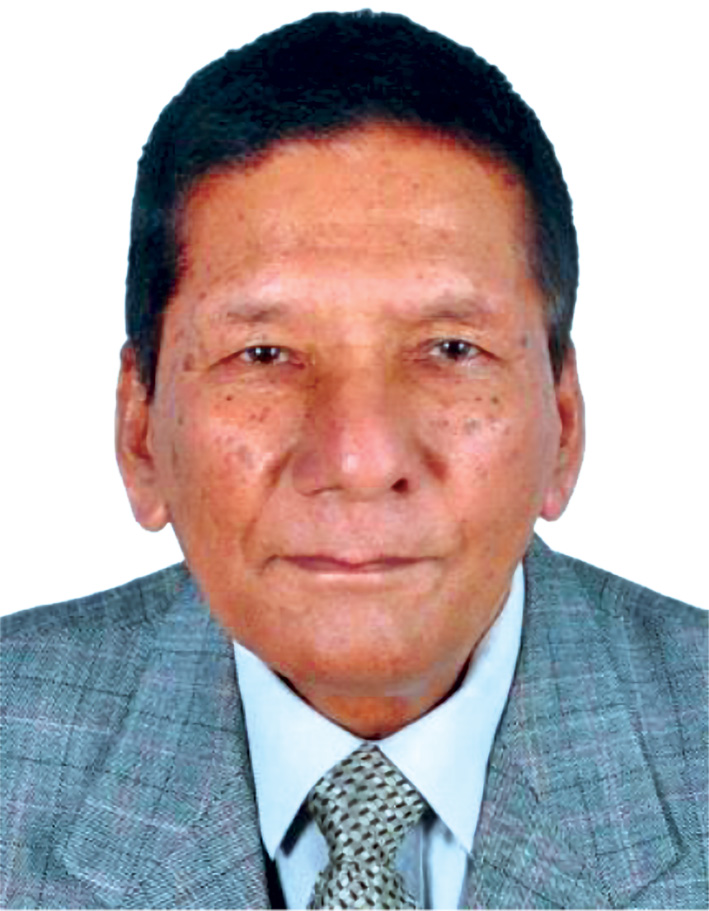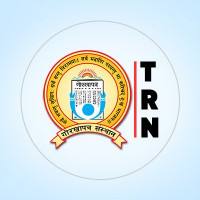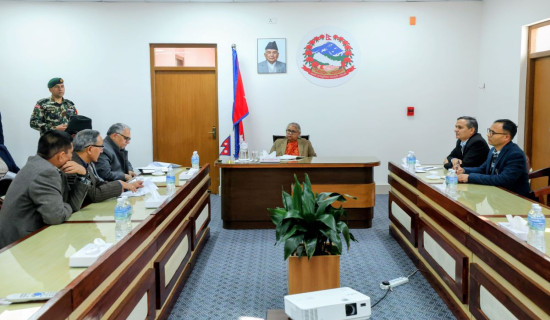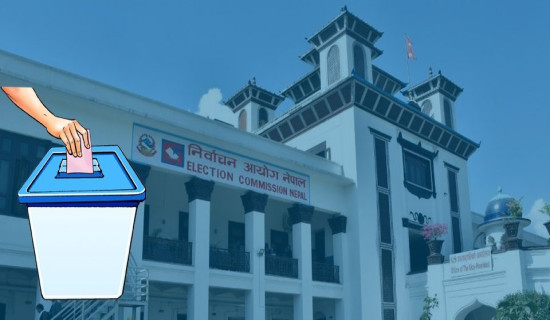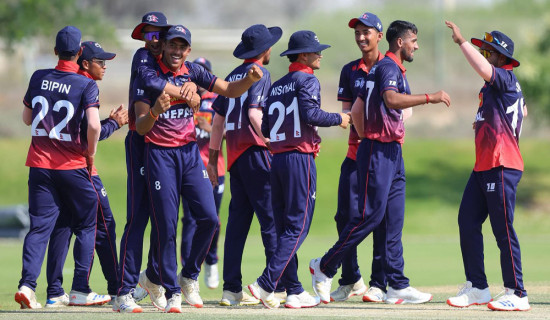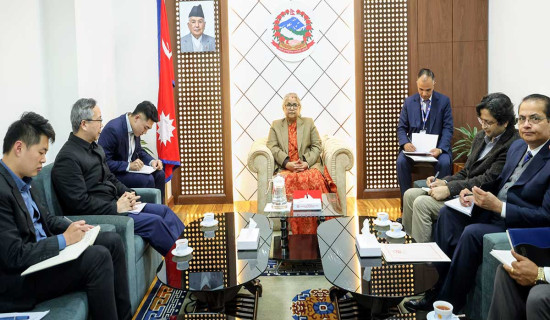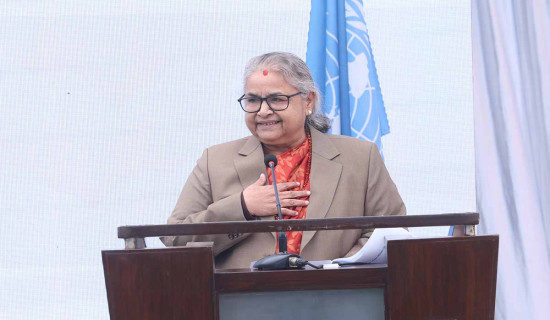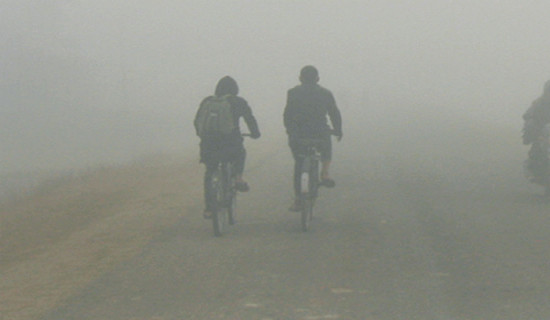- Thursday, 18 December 2025
Land of Sweating God
Prof. Shyam Joshi
The ancient Dolakha town of Dolakha district is situated 6000 feet above sea level. This town is 134 kilometers from Kathmandu and is rich in historical and cultural heritage. In the medieval period, Dolakha was a commercial center and a trade route between India and Tibet. Dolakha was at times called the “land of the rich”.
The prosperity in trade had led to the increase in cultural activities in Dolakha which is still seen in the idols of various gods and goddesses and the festivals around the year. It is said that there were 700 houses inside the fort of Dolakha due to which people used to say "saat saya Dolakhali”.
Historians guess that Kirtisingh was the ruler of Dolakha from 1510 B.S. to 1531 B.S. followed by Uddhav Dev. After the death of Yachhe Malla, king of Kathmandu valley in 1548 B. S. tried to free Dolakha from the center and wrote himself as "Dolakhadhipati". Another ruler Ujotdev established relations with Lalitpur.
He made Dolakha strong politically and culturally. Fundraising Dev freed Dolakha from the center making the treaty of 1605 B.S. and began to write “Rajadhiraj” which is used to address the king. He minted and brought into circulation his own silver money in the form of the coin in 1603 b B.S.
before Mahendra Malla of Kathmandu minted and circulated “Mahendra Malli”.
The coinage "Dolakhaadhipati" is clearly inscribed. As a result of the increased trade relation with Tibet, there was not only an increase in the economic prosperity of Dolakha there was also the spread of Buddhism.
The independent state of Dolakha ended after the inclusion of Dolakha in the Kantipur kingdom by Shipping. This led to the decline in the economic and cultural activities of Dolakha. Dolakha has also remained under Bhaktapur for some time. Prithivi Narayan Shah took Dolakha in the course of the unification of Nepal in 1811 B.S.
Establishment of Bhimeswor
Dolakha is famous because of the temple of the deity Bhimeswor and its rich cultural heritage. Bhimeswor as a God possesses super divine powers and thus is worshipped by all. There is a legend woven around the image of the god Bhimeswor. Once a group of porters were cooking rice on an improvised stone stove at the place where the temple of Bhimeswor is now located.
The stove was in the shape of a triangle with pieces of stone in the three corners. When the porters found that the rice in one corner was uncooked one of the porters struck that corner with a spoon in anger. The stone broke and milk began to flow out of the broken part. The porter resented his folly and established that very stone as lord Bhimeswor.
Front view of Bhimeswor temple
The people then started worshipping this image as that being of lord Bhimeswor. The exact date of the establishment of Bhimeswor is unknown. However, historian Dhan Bajra Bajracharya says that Dolakha was a trade route to Tibet in past and the traders used to worship lord Bhimsen for the betterment of their business.
This might have led to the establishment of Bhimeswor at Dolakha. According to Sabina Shrestha - “The image of Bhimsen of the temple of Patan is worshipped by the Newar community as “ Bhindeyo Aaju”. She mentions a legend as to why Bhimsen is worshipped as the god of trade. ( Mahabharat ko Bhimsen laai kina byaapaar ko debtaa maaninchaa? Setopati, Kathmandu, Bhadra 16, 2078) . Most of the youth who participated in the war of Mahabharat died in the war. So, only women, children and the old survived after the war.
All property and men were destroyed in the war due to which Bharatbarsa became poor. Hence to compensate people for the loss and for restoring their prosperity Bhimsen begged for wealth with Kuber, the lord of wealth.
He distributed the wealth so obtained among his people and said – "Make trade and earn wealth". Therefore, due to the favour made by Bhimsen at the time of abject poverty, the Newar community worshipped Bhimsen as " Bhindeyo Aaju".
As opined by Tek Bahadur Shrestha Lord Bhimeswor is different from Bhimsen of other places since it is also worshipped as Lord Shiva along with Bhimsen. But it is one of the Pandav brothers beyond doubt since the stone images of mother Kunti and consort Dropati are installed to the right and left respectively of the image of lord Bhimeswor.
Now people assemble in the Bhimeswor temple in great number on the occasion of Bhim Yakadashi, Ram Nawami and Durga Puja. On the day of Bhim Yakadashi “lakh batti” or 100000 lamps are lit around the temple. The image of Bhimeswor is bathed in milk on the day of Mahasthan guthi. Even today the head of the image of lord Bhimeswor is seen cut on the right side.
The pit beneath the image is always full of Nirmal (holy water). The absence of Nirmal is said to be ominous, predicting impending misfortune to the locality or the whole country. There is a practice of making people take a great oath by touching Nirmal, in the belief that people cannot dare to speak lie by touching Nirmal.
Forms of Bhimeswor
It is said that lord Bhimeswor changes its countenance or form from time to time as gods are known to have done in the mythological times. Lord Bhim sometimes becomes Bhagwati and at other times Mahadev. According to the prevailing myth, Bhim transforms himself into Bhagwati at the time of animal sacrifice and at the time of rudri and yakchhehom it converts itself into Mahadev.
As a ritual, every afternoon the image of Bhimeswor is worshipped and decorated with ornaments by one of the six trustees or guthiyaar family. According to late Prof. Bal Krishna Joshi lord Bhimeswor is worshipped as “Yak Sheela Tin Abatar” ( Hamro Sanskriti, 2024). Lord takes the form of Mahadev at the time of rudri, Bhagwati (Durgaa Bhawani) at the time of animal sacrifice and Bhimeswor maharaja at other times. Hence lord Bhimeswor is worshipped as three incarnations, namely, Bhimsen, Mahadev and Bhagawati.
Although late Prof. Joshi pointed out three forms of Bhimeswor based on the features of puja there, historian Dhan Bajra Bajracharya and Tek Bahadur Shrestha said after finding evidence during their research that there are only two forms of Bhimeswor. He says that in Dolakha Bhimsen is worshipped and performed rudri as Mahadev and bull, Trishul is offered to Bhimeswor as Mahadev.
The animal sacrifice except the offering of cock and eggs is made in the image of Bhimeswor in the form of Bhimsen. In subarnapatra (golden paper) found in the treasure of Bhimeswor, the deity has been called Mahadev addressed as " Sree 3 Mahadev or Dolakhako Adhipati Sree 3 Bhimeswor”.
Sree 3 is mentioned in tamrapatra and subarnapatra . Earlier, historian Mohan Prasad Khanal indicated only one image of Bhimeswor when he mentioned "Sri 3 Bhim Rajeswaor lai namaskar. Bhakta haru ko bidhna harne , pandav harumaa siromani bhayeko, kaurab haru ko naash garne, dropadi ko manparne Bhimsen laai dhogchhu”.
A Guthiyar performing daily worship (nitya puja) decorating the image of Bhimeswor with ornaments. This puja is repeated every afternoon.
The historian Tek Bahadur Shrestha has rightly remarked – " Bhimeswor is the brightest sample of Dolakha:s ancient cultural heritage." (TB Shrestha, "Dolakha and Bhimeswor", Souvenir of Dwalkha Guthi, 2046). Mohan Prasad Khanal mentioned that Dolakhapuri like Indrapuri is a famous place where a large powerful and bright Bhimsen has been established.
The legend is that during the time of hiding or “Gupta baas” Pandavas came to Dolakha and to remain hidden from others they started to talk a secret language. This language is called Dolakali language which is spoken today in Dolakha.
God Sweating
Lord Bhimeswor is said to have the power to predict, for when the country faces difficulty sweat is supposed to trickle out of its body. This is why Dolakha is said to be the land of the sweating god Bhimeswor. People in Dolakha have many stories of sweat dripping down the image, in the great earthquake of 1990 B.S and many other events afterwards such as the political change of 2007 and 2017,
the great earthquake of 2072 and the Covid pandemic of 2076. A person Lekhnath Bhandari by name reacting to the news of sweating by lord Bhimeswor of Dolakha (Kantipur daily 11 Marga 2077) said that it is mere superstition and fallacy. It is because what people call the sweating by the god has a scientific reason. The reason is that the sweating in an idol is the water formed from steam. When we cook food the pot gets heat and steam comes out.
The drops or drizzle of water is seen on the cover of the pot. This is what happens on the idol or the stone image. This is the process related to the temperature of nature. Hence it is quite misleading to say that there will be either god or bad due to the sweating by lord Bhimeswor of Dolakha.
At the time of sweating the image of Lord Bhimeswor transforms into jet-black and oily. Trilochan Pradhan, chief editor of Samaya Saandharvhik daily reacted to his comment that nobody can question others’ faith. It is said to believe not in what you hear, believe only in what you see.
When I asked the eyewitness of the sweating incident William Finke, a peace corps volunteer in 2028 B.S. he said - “what I saw is amazingly true but it might be due to the existence of petroleum mineral there".
Other Sweating Deities
However, the tale of a sweating god is not new only in Dolakha of Nepal. Some of the gods of India are also reported to sweat sometimes. In Sikkal Singarvelaver temple of Tamil Nadu dedicated to Lord Karthikeya people believe that the image of Lord Kartikeya participates when the festival is observed from October to November.
The priest of the temple sprinkles the sweat of the lord among the devotees. The festival is observed to mark the victory of lord Karthekeya over demon Surapadman.
It is said that the goddess of Bhalei Mata temple of Himanchal Pradesh also takes part. At the time of Navaratri devotees come here and the goddess precipitates. The participation of the goddess is said to fulfil the wishes of the devotees. Similarly, there is a temple of Maa Kali in Jabalpur of Madhya Pradesh. According to religious faith since Maa Kali cannot tolerate hotness her image participates.
(Joshi teaches Business Economics)
How did you feel after reading this news?

